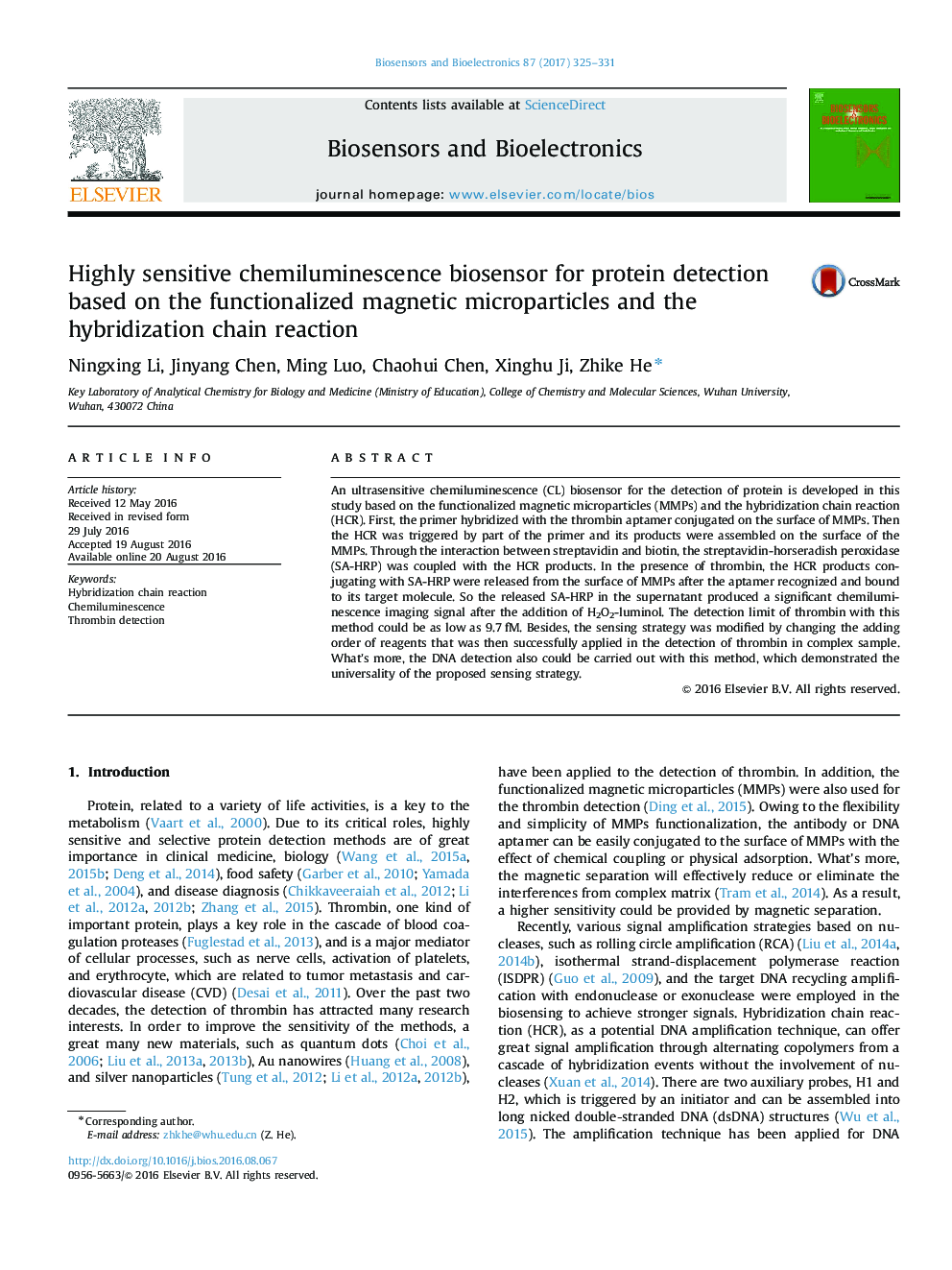| Article ID | Journal | Published Year | Pages | File Type |
|---|---|---|---|---|
| 7230125 | Biosensors and Bioelectronics | 2017 | 7 Pages |
Abstract
An ultrasensitive chemiluminescence (CL) biosensor for the detection of protein is developed in this study based on the functionalized magnetic microparticles (MMPs) and the hybridization chain reaction (HCR). First, the primer hybridized with the thrombin aptamer conjugated on the surface of MMPs. Then the HCR was triggered by part of the primer and its products were assembled on the surface of the MMPs. Through the interaction between streptavidin and biotin, the streptavidin-horseradish peroxidase (SA-HRP) was coupled with the HCR products. In the presence of thrombin, the HCR products conjugating with SA-HRP were released from the surface of MMPs after the aptamer recognized and bound to its target molecule. So the released SA-HRP in the supernatant produced a significant chemiluminescence imaging signal after the addition of H2O2-luminol. The detection limit of thrombin with this method could be as low as 9.7Â fM. Besides, the sensing strategy was modified by changing the adding order of reagents that was then successfully applied in the detection of thrombin in complex sample. What's more, the DNA detection also could be carried out with this method, which demonstrated the universality of the proposed sensing strategy.
Related Topics
Physical Sciences and Engineering
Chemistry
Analytical Chemistry
Authors
Ningxing Li, Jinyang Chen, Ming Luo, Chaohui Chen, Xinghu Ji, Zhike He,
